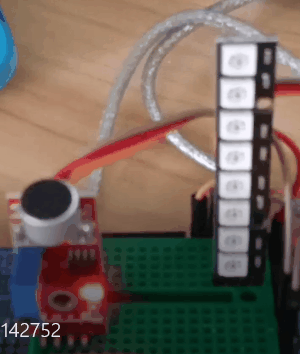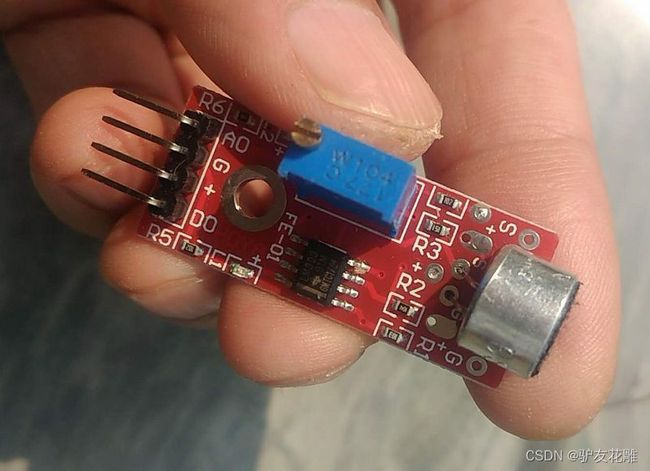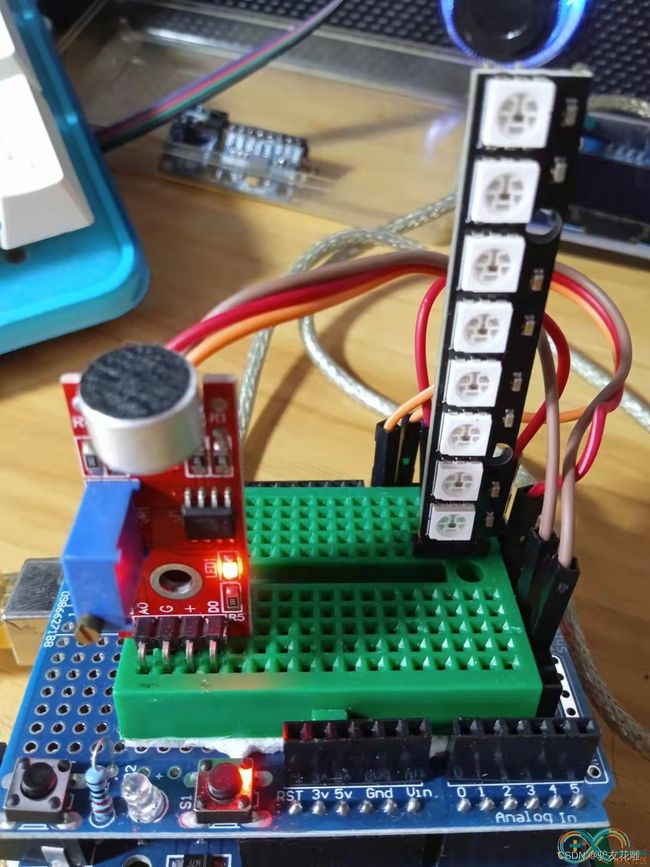【雕爷学编程】Arduino动手做(06)---KY-038声音传感器模块3
37款传感器与执行器的提法,在网络上广泛流传,其实Arduino能够兼容的传感器模块肯定是不止这37种的。鉴于本人手头积累了一些传感器和执行器模块,依照实践出真知(一定要动手做)的理念,以学习和交流为目的,这里准备逐一动手尝试系列实验,不管成功(程序走通)与否,都会记录下来—小小的进步或是搞不掂的问题,希望能够抛砖引玉。
【Arduino】168种传感器模块系列实验(资料代码+仿真编程+图形编程)
实验六:KY-038高感度声音传感器模块
【Arduino】168种传感器模块系列实验(资料代码+仿真编程+图形编程)
实验之六:KY-038声音传感器模块声控 感应小开关麦克风模块声音控制模块
项目:使用KY—038声音模块的阙值触发WS2812节奏灯条
Arduino实验开源代码
/*
【花雕动手做】有趣好玩的音乐可视化系列小项目(04)---WS2812条灯
项目之一: 使用KY—038声音模块的阙值触发WS2812节奏灯条
*/
#includeArduino实验场景图
https://v.youku.com/v_show/id_XNTgxMTgxMjMwOA==.html?firsttime=0
实验场景动态图

【Arduino】168种传感器模块系列实验(资料代码+仿真编程+图形编程)
实验六:KY-038声音传感器模块声控 感应小开关麦克风模块声音控制模块
项目:数字信号驱动的七色节奏灯
Arduino实验开源代码
/*
【花雕动手做】有趣好玩的音乐可视化系列小项目(04)---WS2812条灯
项目之二:数字信号驱动的七色节奏灯
*/
#define FASTLED_INTERRUPT_RETRY_COUNT 0
//#define FASTLED_ESP8266_RAW_PIN_ORDER
#include 实验视频剪辑
https://v.youku.com/v_show/id_XNTgxMTgyNDkwNA==.html?firsttime=0
实验场景动态图

【Arduino】168种传感器模块系列实验(资料代码+仿真编程+图形编程)
实验六:KY-038声音传感器模块声控 感应小开关麦克风模块声音控制模块
项目:12位环形音乐反应灯
Arduino实验开源代码
/*
【花雕动手做】有趣好玩的音乐可视化系列小项目(04)---WS2812条灯
项目之三:12位环形音乐反应灯
*/
#define FASTLED_INTERRUPT_RETRY_COUNT 0
//#define FASTLED_ESP8266_RAW_PIN_ORDER
#include Arduino实验场景图
https://v.youku.com/v_show/id_XNTgxMTczNDcwOA==.html?firsttime=0
实验场景动态图



